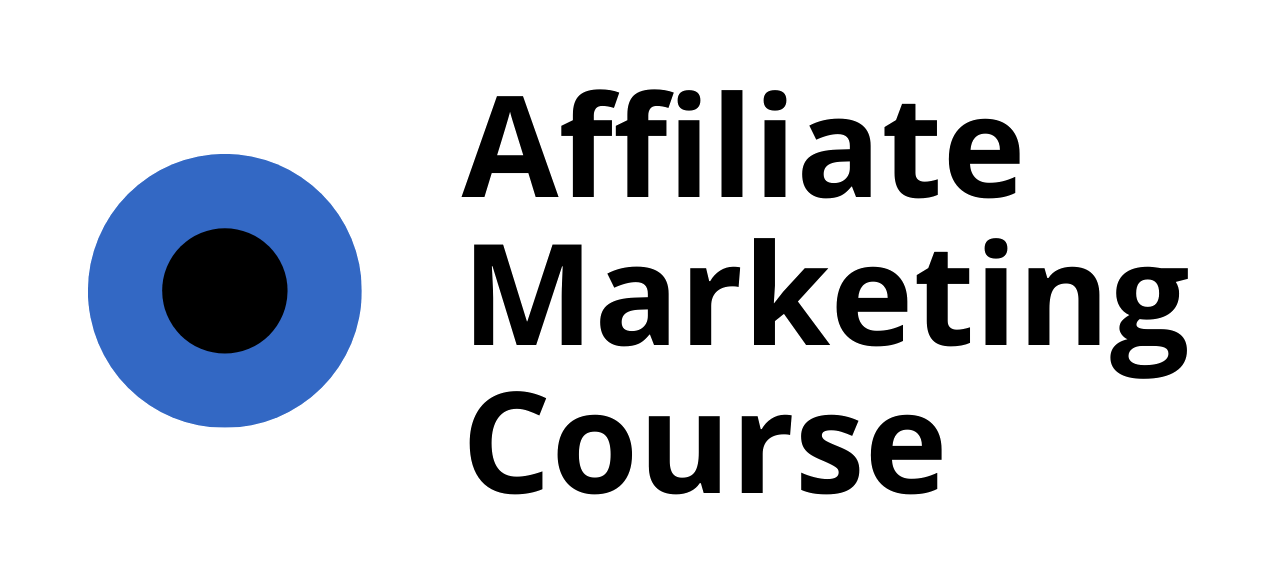Are you eager to unlock the full potential of affiliate marketing and watch your earnings soar? Imagine the excitement of earning $100+ daily through a well-crafted affiliate program, all while enjoying the convenience of high-quality, free templates designed to boost engagement and maximize your ROI. Whether you’re just starting out or looking to refine your strategy, affiliate marketing offers immense opportunities, but achieving success requires the right tools and approach. In this guide, we’ll explore how free affiliate marketing templates can revolutionize your efforts, helping you overcome common challenges and stay ahead of the competition. From optimizing your campaigns with conversion-optimized words to selecting the best niches and leveraging powerful tools, this article is your ultimate roadmap to affiliate marketing success. Let’s dive in and discover how you can ignite your affiliate marketing journey with free templates, setting the stage for long-term growth and profitability.
The easiest niche for affiliate marketing, considering factors like demand, competition, and personal interest, appears to be Sustainability and Eco-Friendly Products. This niche taps into a growing market of consumers eager to support environmentally responsible brands. By focusing on a specific sub-niche, such as eco-friendly home goods or sustainable fashion, you can carve out a unique space with less competition. Additionally, your passion for this topic will naturally translate into engaging content, making it easier to build a loyal audience.

Can You Make $100 a Day with Affiliate Marketing?
Affiliate marketing offers significant earning potential, potentially reaching $100+ per day with consistent effort and strategic planning. However, achieving this income level requires dedication, expertise, and a well-executed marketing strategy.
Earning Potential
While it’s possible to earn $100 daily, many factors influence earnings:
- The niche or industry you choose to promote.
- Your target audience’s engagement and purchasing behavior.
- Your marketing skills and the effectiveness of your campaigns.
- The quality of products or services you promote.
Key Strategies for Success
To maximize your affiliate marketing income, focus on:
- Choosing the Right Niche: Specialize in a niche where you have expertise or passion. Focus on industries like health, fitness, technology, or personal finance.
- Building a Target Audience: Create content that solves problems for your audience. Use blogs, videos, and social media to attract and engage your target market.
- Promoting High-Converting Products: Partner with companies offering quality products that resonate with your audience. Look for affiliate programs with competitive commission structures.
- Leverage Digital Marketing Tools: Use email marketing, social media advertising, and SEO to drive targeted traffic to your affiliate links.
Tools and Resources
To streamline your affiliate marketing efforts, consider using:
- Affiliate Marketing Courses : Learn proven strategies and techniques to build a successful affiliate business.
- Google Analytics: Track your website’s performance and optimize your campaigns.
- Google Ads: Run targeted ads to promote your affiliate links.
- Social Media Platforms: Engage with your audience and promote affiliate products effectively.
Common Mistakes to Avoid
Many affiliates struggle with:
- Promoting low-quality or irrelevant products.
- Failing to build an engaged audience.
- Neglecting mobile optimization.
- Not diversifying their traffic sources.
Success Stories
Several affiliate marketers have achieved remarkable success, earning hundreds or even thousands daily. Their achievements highlight the potential of affiliate marketing when executed properly.
Conclusion
Achieving $100+ per day with affiliate marketing is achievable but demands hard work, expertise, and a commitment to continuous learning. By leveraging the right strategies, tools, and resources, you can unlock your affiliate marketing potential and build a profitable online business.
Ready to get started? Visit our affiliate marketing course to learn everything you need to succeed!
How to Create an Affiliate Marketing Program
Creating a successful affiliate marketing program involves several key steps. Below is a detailed, step-by-step guide to help you get started:
Step 1: Choose Your Niche
Start by selecting a niche you’re passionate about. This ensures your content resonates authentically with your audience. Consider factors like your interests, target audience needs, and market demand.
Niche Selection Tips:
- Focus on specific interests or hobbies.
- Research keywords using tools like Google Keyword Planner or SEMrush.
- Identify gaps in the market where your expertise can shine.
Step 2: Build Your Website or Blog
Create a professional online presence. A blog is ideal for sharing tips, product reviews, and guides. Alternatively, a simple landing page can suffice if your focus is on promoting specific products.
Website Setup Tips:
- Choose a reliable hosting platform like Bluehost or SiteGround.
- Design your site with a clean, user-friendly interface.
- Optimize for mobile devices to ensure accessibility.
Step 3: Join Affiliate Programs
Sign up for affiliate marketing networks to access various affiliate programs. Major networks include Amazon Associates, ShareASale, ClickBank, and CJ.com. Look for niche-specific programs that align with your chosen niche.
Affiliate Program Tips:
- Research programs to find ones that fit your niche perfectly.
- Read terms and conditions carefully to avoid violations.
- Prioritize programs with competitive commission rates and robust support.
Step 4: Create Compelling Content
Develop high-quality content that educates and entertains your audience. Focus on topics that solve problems and provide value. Use a mix of blog posts, videos, infographics, and podcasts to cater to different preferences.
Content Creation Tips:
- Write SEO-optimized titles using keyword research tools.
- Include internal links to keep readers engaged and improve SEO.
- Use visuals like images, charts, and tables to enhance understanding.
Step 5: Promote Affiliate Links Naturally
Integrate affiliate links into your content seamlessly. Review products, compare services, and recommend offers in a genuine manner. Use text links, banners, and product widgets to diversify your promotions.
Link Placement Tips:
- Place links in resourceful sections like “Best Products” or “Top Picks.”
- Use descriptive anchor text to explain the link’s purpose.
- Test different placements to identify what works best.
Step 6: Drive Traffic Through SEO and Social Media
Attract visitors by optimizing your content for search engines and promoting it across platforms. Use SEO techniques like keyword optimization and meta descriptions. Leverage social media platforms like Instagram, Pinterest, and YouTube to showcase your content visually.
Traffic Generation Tips:
- Implement on-page SEO practices to improve search rankings.
- Share your content on social media with engaging captions and hashtags.
- Use email marketing by offering free resources in exchange for email sign-ups.
Step 7: Analyze and Optimize Performance
Monitor your efforts using analytics tools like Google Analytics and Google Search Console. Track metrics such as click-through rates, conversion rates, and earnings. Experiment with A/B testing to refine your strategies and improve results.
Performance Tracking Tips:
- Review traffic sources to identify where your audience is coming from.
- Analyze popular posts to tailor future content.
- Adjust ads and links based on test results.
Step 8: Stay Updated and Compliant
Keep abreast of industry trends and regulatory changes. Engage with affiliate marketing communities and follow expert blogs to stay informed. Adhere to guidelines set by the FTC and other regulatory bodies to maintain trust and compliance.
Compliance Tips:
- Disclose affiliate relationships clearly in your content.
- Avoid misleading advertising practices.
- Monitor program terms for any changes or updates.
Building Relationships with Affiliates
Maintain communication with your affiliate partners. Regularly check in to discuss promotions, new products, and opportunities for collaboration. Building strong relationships can lead to better terms and support.
Relationship Building Tips:
- Reach out periodically to express appreciation and gather feedback.
- Participate in affiliate forums or groups to network.
- Seek exclusive deals or commissions by negotiating with affiliates.
By following these steps, you can establish a robust affiliate marketing program that drives engagement, builds your brand, and generates revenue. 
What is the Highest Paying Affiliate Program?
The highest paying affiliate programs vary based on the industry and niche, but some well-known programs offer significant earning potential. Here are some top options:
- Amazon Associates : Offers up to 10% commission on eligible sales, making it a popular choice for many affiliates.
- ShareASale : Known for its competitive rates, with commissions ranging up to 15% on certain products.
- ClickBank : Specializes in high-ticket digital products, offering commissions as high as 75% on select items.
- Rakuten Advertising (formerly LinkShare) : Provides competitive rates, typically around 12% for most merchants.
- CJ Affiliate : Offers commissions up to 21% on a variety of products, particularly in the retail and fashion sectors.
- Shopify Affiliate Program : Commissions can reach up to 20% for referring new Shopify e-commerce stores.
- Leadpages : Affiliates earn up to 30% recurring commissions for referrals to their landing page software.
- Ahrefs : Offers a 40% recurring commission rate for their SEO and marketing tools.
To maximize your earnings, focus on niches with higher commission rates and promote high-ticket or subscription-based products. Additionally, ensure your content aligns with the target audience’s interests to drive targeted traffic.

Best Keywords for Affiliate Marketing
The following keywords are carefully selected to help optimize your affiliate marketing efforts and improve your search engine rankings:
- Affiliate Marketing – The core term for this type of marketing.
- Online Marketing – A broader term that includes affiliate marketing.
- Digital Marketing – Encompasses various digital strategies, including affiliate marketing.
- Make Money Online – Attracts those looking for ways to earn income through affiliate programs.
- E-commerce – Relevant for affiliate marketers focusing on selling products online.
- Internet Business – Appeals to entrepreneurs interested in affiliate opportunities.
- Marketing Strategies – Covers tactics and methods used in affiliate marketing.
- Content Creation – Important for creating valuable content to promote affiliate offers.
- Social Media Marketing – A key component of modern affiliate marketing campaigns.
- Email Marketing – Essential for nurturing leads and converting them into customers.
- SEO Optimization – Crucial for ensuring your affiliate content ranks well in search engines.
- Pricing Models – Relates to how affiliate programs are structured and compensated.
- Conversion Rates – Important metric for measuring affiliate program success.
- Customer Acquisition – Focuses on strategies to attract new customers via affiliate channels.
- Brand Awareness – Helps increase visibility of your brand through affiliate marketing efforts.
- Lead Generation – Attracts visitors to your affiliate landing pages.
- Commission Rates – Key factor in choosing which affiliate programs to join.
- Affiliate Programs – General term for any affiliate marketing initiative.
- Affiliate Marketing Tips – Provides guidance for improving affiliate marketing efforts.
- Affiliate Marketing for Beginners – Targets newbies looking to get started in affiliate marketing.
- Affiliate Marketing Tools – Includes software and platforms used in affiliate marketing.
- Affiliate Marketing Statistics – Offers insights into the growth and impact of affiliate marketing.
- Affiliate Marketing Trends – Keeps you updated on the latest developments in the field.
- Affiliate Marketing Courses – Resources for learning affiliate marketing techniques.
These keywords cover a wide range of topics within affiliate marketing, ensuring your content is optimized for various search intents. Use them strategically in your content to improve your search engine rankings and drive targeted traffic to your affiliate programs.
What is the easiest niche for affiliate marketing?
Affiliate marketing niches vary in popularity, competition, and profitability. To determine the “easiest” niche, factors like audience size, product availability, and market saturation come into play. Here are some niches that are considered accessible for affiliate marketers:
- Health and Wellness : With a broad audience and constant demand, niches like fitness, nutrition, and mental health offer numerous products to promote. Platforms like AffiliateMarketingCourse.biz provide resources to get started.
- Beauty and Skincare : This niche appeals to a large demographic, particularly women, and includes a variety of products from makeup to skincare essentials.
- Pet Care : Pet owners are often passionate about their pets, leading to a steady demand for products like food, toys, and grooming supplies.
- Fashion and Style : Fashion niches can target specific audiences, such as men’s apparel or accessories, offering a mix of trendy and essential products.
- Home Decor : With a focus on interior design, this niche caters to homeowners seeking unique pieces to enhance their living spaces.
- Digital Products : Promoting eBooks, online courses, or software allows for high margins and reduced inventory concerns.
- Software and Tech : Niche areas like web hosting or cybersecurity offer high commission rates, though understanding the products may require initial effort.
- Sustainability and Eco-Friendly Products : As consumer awareness grows, promoting green products can tap into a dedicated market segment.
- Financial Services : Personal finance and investment products can attract a motivated audience seeking reliable advice.
- E-commerce Products : Focusing on specific niches within e-commerce, such as electronics accessories, can leverage existing platforms and marketing channels.
Each of these niches offers unique opportunities, and the choice ultimately depends on personal interests, target audience, and market research. Starting with a niche that aligns with existing passions or expertise can streamline the process of building a successful affiliate marketing strategy.

The Hardest Part of Affiliate Marketing
Building a loyal following is widely regarded as the most challenging aspect of affiliate marketing. This process involves several interconnected steps that demand time, effort, and a deep understanding of your audience.
- Establishing Trust: Affiliates rely heavily on their reputation and credibility. Potential customers must trust your recommendations to feel confident in purchasing products. This trust is built through consistent delivery of high-quality, valuable content that aligns with your audience’s interests and needs.
- Finding Your Niche: In a crowded marketplace, standing out requires a unique angle or specialized expertise. Identifying an underserved niche or a gap in the market can be challenging. Additionally, understanding your target audience’s pain points and preferences is crucial for tailoring your content effectively.
- Driving Targeted Traffic: Generating substantial traffic is essential for affiliate success. This can be achieved through various channels like SEO, social media marketing, and paid advertising. However, each channel requires its own strategy and resources. Moreover, converting this traffic into engaged users who take action (e.g., clicks, purchases) adds another layer of complexity.
- Optimizing Conversions: Even with traffic, achieving high conversion rates is challenging. Factors like landing page design, email nurturing, and product recommendations all play a role. Continuous testing and optimization are necessary to maximize the likelihood of your audience taking desired actions.
- Navigating Monetization Strategies: Affiliate programs offer different commission structures and terms. Balancing the promotion of products with the need to maintain content quality and engagement can be tricky. Additionally, adhering to program policies and avoiding violations that could impact earnings adds another layer of complexity.
- Staying Updated and Adapting: The digital marketing landscape evolves rapidly, with new trends and technologies emerging regularly. Keeping up with these changes while maintaining a competitive edge requires constant learning and adaptation. This can be overwhelming for those new to the field.
- Tracking Success and Making Data-Driven Decisions: Effectively monitoring and analyzing campaign performance is critical for long-term success. This involves leveraging analytics tools, interpreting data, and making informed adjustments. However, deciphering complex metrics and correlating them with outcomes can be daunting, particularly for those without prior experience.
Addressing these challenges requires a combination of strategic planning, continuous learning, and adaptability. While each component contributes to the overall success of an affiliate marketing campaign, building a loyal following remains the most multifaceted and demanding task due to its intersection with trust-building, niche identification, traffic generation, conversion optimization, monetization, and ongoing adaptation.




0 Comments